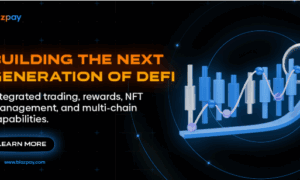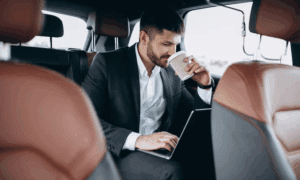The gig economy has reshaped both employment practices and delivery systems which impact how people work and receive their goods. The delivery services Uber Eats and DoorDash and Instacart and Amazon Flex and numerous other platforms enable customers to receive food and groceries and packages at their doorstep within short time frames. The flexible work nature of these jobs enables fast earnings but delivery drivers face growing numbers of workplace accidents as a result.
The increasing number of vehicles on the roads because of rising demand leads to more frequent traffic accidents. The incidents produce various problems which affect who should be held accountable and what rights workers have and how insurance benefits will operate. Injury victims need to comprehend how gig economy delivery accidents operate because this knowledge helps them defend their rights and obtain appropriate compensation.
Why Delivery Drivers Face Higher Accident Risks
Delivery drivers face different hazards which raise their risk of accidents compared to regular drivers on the road. Some of the leading factors include:
Tight Deadlines and Pressure
The majority of delivery applications enforce strict time limits and performance measurement systems. Drivers must work fast to fulfill customer demands and boost their income which results in dangerous driving behavior like speeding and running red lights.
Distracted Driving
Drivers need to operate applications at all times to receive orders and follow delivery routes and verify package drop-offs. This increases the likelihood of distracted driving accidents.
Unfamiliar Routes
Gig drivers face different challenges than traditional commuters because they enter unfamiliar areas which leads to driving errors and confusion when they operate vehicles.
Fatigue
Gig workers must operate their vehicles for extended periods while they work to meet their financial obligations. Drivers experience slower reaction times and increased accident risk during nighttime hours because of fatigue.
Increased Traffic Presence
The permanent presence of thousands of gig workers on the streets leads to traffic congestion and parking competition which results in minor accidents and severe vehicle crashes and pedestrian accidents.
Common Types of Delivery Driver Accidents
The working conditions of gig drivers generate specific accident patterns which appear to be increasing in frequency.
- The sudden braking of vehicles in congested traffic areas leads to rear-end accidents.
- Drivers create dangerous intersection collisions because they run yellow or red traffic signals.
- Drivers cause parking accidents when they double-park their vehicles and block bike lanes and park in dangerous locations.
- People get injured when delivery vehicles hit pedestrians while they are walking in residential areas or at crosswalks.
- The limited road space which urban areas have forces bicycles and scooters to share the same space with other vehicles which leads to accidents.
- The majority of these accidents happen in areas where people live or where many pedestrians gather so the injuries tend to be very serious.
Who Is Liable in a Delivery Driver Accident?
The most challenging part of gig economy accident cases stems from figuring out who should be held responsible. The employment status of delivery drivers differs from traditional workers because they function as independent contractors rather than regular employees. The classification system enables businesses to escape various employee-related obligations which would normally include workers’ compensation coverage for workplace accidents.
Several parties could be held liable based on the specific details of the case:
The Delivery Driver
A driver who operates with negligence by speeding or texting or driving under the influence will become liable for any damages that occur. The victims have the ability to file claims through the personal auto insurance of the driver.
The Delivery Company
The liability of Uber Eats and DoorDash and Amazon Flex extends to these companies in certain situations. These companies maintain commercial liability insurance which activates during the delivery process when drivers perform their work. The policies show major differences in both their coverage areas and their maximum coverage amounts.
Other Motorists or Third Parties
If another driver causes the accident, that driver’s insurance may apply. The liability for accidents caused by poor road conditions or defective vehicle parts may rest with government entities and manufacturers.
Insurance Coverage Challenges
The insurance system creates major confusion for delivery drivers who get into accidents. Most personal auto insurance policies do not provide protection for accidents which happen during commercial driving activities. The insurance provider will refuse to pay the claim unless the driver has obtained additional coverage.
Some gig companies offer limited coverage, but it often depends on the stage of the delivery:
- The driver needs to activate their personal insurance coverage when the application is inactive.
- App on, waiting for orders: Some companies provide limited liability coverage, but it may not cover injuries to the driver.
- During active delivery: Commercial coverage may apply, often with higher limits, but coverage for the driver’s injuries may still be excluded.
- The current insurance system makes it difficult for accident victims to determine which insurance company will provide their compensation.
Impact on Victims
The resulting damage from these accidents becomes extremely devastating. The victims encounter severe injuries which include broken bones and traumatic brain injuries and spinal cord damage and other permanent disabilities. Medical expenses along with lost income and ongoing rehabilitation costs create financial stress in addition to the physical injuries.
The complex nature of liability and insurance problems creates several obstacles which delay compensation payments to victims. The insurance company will present settlement offers which they expect will prevent the victims from taking legal action.
Legal Challenges in Gig Economy Accidents
Courts across the United States face challenges when they attempt to apply conventional liability laws to accidents that happen in the gig economy. The main issue of these discussions centers on whether drivers should remain employees or function as independent contractors. The independent contractor system faces opposition from California and other states which have introduced new laws but businesses continue to resist these changes.
The victims of delivery driver accidents need to handle various insurance problems because personal insurance and commercial coverage and liability disputes remain unresolved.
What to Do After a Delivery Driver Accident
The actions you perform right after your delivery driver collision will determine how well your insurance claim develops.
Call the Police and Report the Accident
A police report establishes an official record which helps determine who is responsible for the incident.
Seek Medical Care
Every injury needs to be evaluated by medical personnel right after it occurs. Medical records provide critical evidence for a claim.
Collect Information
Obtain the delivery driver’s complete name and contact information and insurance details and delivery platform name.
Gather Evidence
Take photos of the accident scene, vehicles, and surrounding conditions. The police need to obtain any available witness statements.
Consult an Attorney
Multiple insurance companies appear in these cases together with disputed liability so you should hire a personal injury attorney to defend your rights and achieve the best possible compensation.
The gig economy delivers convenience and job possibilities yet it has caused an increase in delivery driver workplace accidents. The combination of fast delivery demands and driver dependence on navigation systems and ambiguous insurance policies creates hazardous road conditions.
The process of identifying who should pay for victim injuries proves to be a complicated matter. The recovery process becomes slower because insurance companies must determine which party should bear responsibility between the driver and delivery company and other motorists. Victims can achieve better protection and compensation by obtaining medical care quickly and creating accident records and working with a skilled car accident lawyer.
The gig economy keeps expanding so lawmakers and insurers and courts must create new systems which protect public safety and maintain accountability standards for quick delivery services.



































